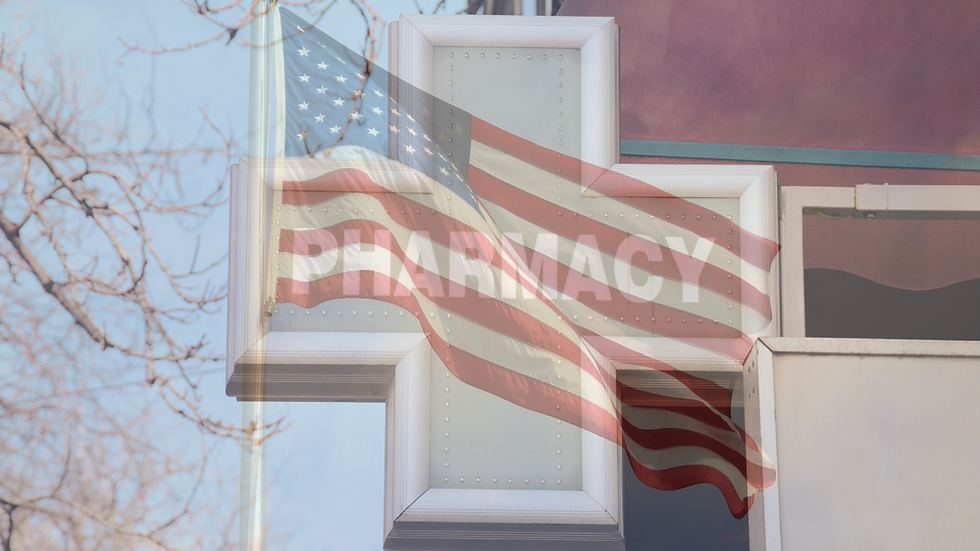FTC Caught in Balancing Act With Pharmacy Benefit Manager Probe
- Jul 31, 2022
- 4 min read
Updated: Aug 6, 2024
PBM group says independent pharmacies are ‘stable’
‘Need to understand’ what’s happening with drug supply chain, consumer costs
The FTC will have to sift through competing claims within the pharmacy supply chain as it probes the entities that manage prescription drug benefits.
Independent pharmacies say pharmacy benefit managers’ recent integration with retail pharmacies and health plans has steered patients away from their businesses. But the Pharmaceutical Care Management Association, the leading PBM trade group, says PBMs haven’t limited the healthy growth of the independent pharmacy marketplace—which many rural populations rely on for treatment.
The long-running debate comes as the Federal Trade Commission investigates whether PBMs’ practices are anticompetitive and contribute to higher drug prices. Drug policy analysts say the agency should focus on examining concrete data to reach conclusions on what practices are fueling skyrocketing drug costs, and how this can inform future policy.
“With the soaring price of medicine, everyone likes to engage in finger pointing and claim someone else is the bad guy,” said Robin Feldman, a professor and researcher at the University of California, Hastings College of the Law who focuses on drug patents, pricing, and access.
“A thoughtful FTC study should find the reliable information that policymakers have not had to date and that they need to understand what’s happening,” she said.
PBMs manage drug coverage for health insurers, large employers, Medicare prescription drug plans, and others. They negotiate discounts from drugmakers, collect rebates from them, and determine how pharmacies get reimbursed for distributing prescriptions. The nation’s three largest PBMs—CVS Health Corp., Express Scripts Inc., and OptumRx—control 85% of the market.
The FTC voted unanimously in June to launch a probe and send orders to the six largest PBMs for detailed information on their business practices. The FTC has said its study will look at, in part, fees to unaffiliated pharmacies, any methods to steer patients to PBM-affiliated pharmacies, and the processes to determine what health plans reimburse to pharmacies.
The PBM Defense
PCMA, whose members include CVS Health and Express Scripts, has pushed back on claims that they’re hurting independent pharmacies, saying their fundamental role is “to help make the drug benefit more affordable.”
“There’s this narrative out there, this assumption, that community pharmacies are closing and they’re closing in escalating rates,” PCMA President and CEO JC Scott said in an interview. “But when you look at the data, that just isn’t the case.”
A new PCMA analysis shared exclusively with Bloomberg Law states that from 2012 to 2022, the total number of independent pharmacies across the US increased by 8%—with more than 1,700 new stores added to the market. There are currently more than 23,000 independent pharmacy locations across the US, according to the PCMA data.
The “community pharmacy marketplace is stable,” Scott said. This analysis should push the FTC to “reconsider what the underlying objective is” in the agency’s PBM study.
The PCMA’s study, based on data collected by the National Council for Prescription Drug Programs (NCPDP), counters arguments from the National Community Pharmacists Association, which says the number of independent pharmacies has gone down over the past 20 years.
NCPA CEO B. Douglas Hoey said the NCPA puts the current total number of independent pharmacies at nearly 19,400 as of June 2021.
The NCPA based its analysis on data collected by health information technology company IQVIA, which the pharmacists association says it now relies on after years of using data from the national council. Hoey said there’s typically been “lag time” in the NCPDP database between pharmacies closing and their numbers going inactive.
But even prior to that switch, Hoey said NCPA’s analysis has shown “a slow erosion” of independent pharmacies over the years, with a few exceptions.
“Most years, there was a drop of usually 200 or 300 each year, despite population growth over that 20-year period,” he said.
PCMA, which measured independent pharmacies as groups of three or fewer under common ownership, acknowledged there have been some fluctuations over the past five years in terms of gains and losses, but argued the overall number hasn’t shifted dramatically.
Going Deeper
Antitrust policy analysts say the landscape for community pharmacists is much more complicated than counting numbers.
Looking solely at the total counts of independent pharmacies “doesn’t address how the pharmacies are distributed,” Michael Carrier, an antitrust professor at Rutgers Law School, said.
He cited a 2021 analysis from online drug pricing comparison tool GoodRx, which found that more than 40% of US counties are considered “pharmacy deserts,” where most people must drive more than 15 minutes to reach the nearest pharmacy. Rural communities often rely on local, independent pharmacies because they may often be the only ones closest to them for miles.
Independent pharmacies argue that PBMs charge them higher fees than their affiliated pharmacies. Carrier said that because independent stores get the majority of their revenue from drug sales, higher fees mean they are “losing money or breaking even on prescriptions,” threatening closures and access to pharmacy services in rural areas. A study published earlier this month by the Journal of the American Pharmacists Association found that roughly 76% of pharmacies in rural regions of the country are franchises or independent pharmacies...
To contact the reporter on this story: Celine Castronuovo at ccastronuovo@bloombergindustry.com




Comments